Citrus trees are popular fruit trees that require proper care and management to thrive. Fertilization is providing essential nutrients to plants, including macronutrients and micronutrients. It helps improve soil quality and structure, affecting water and nutrient availability.
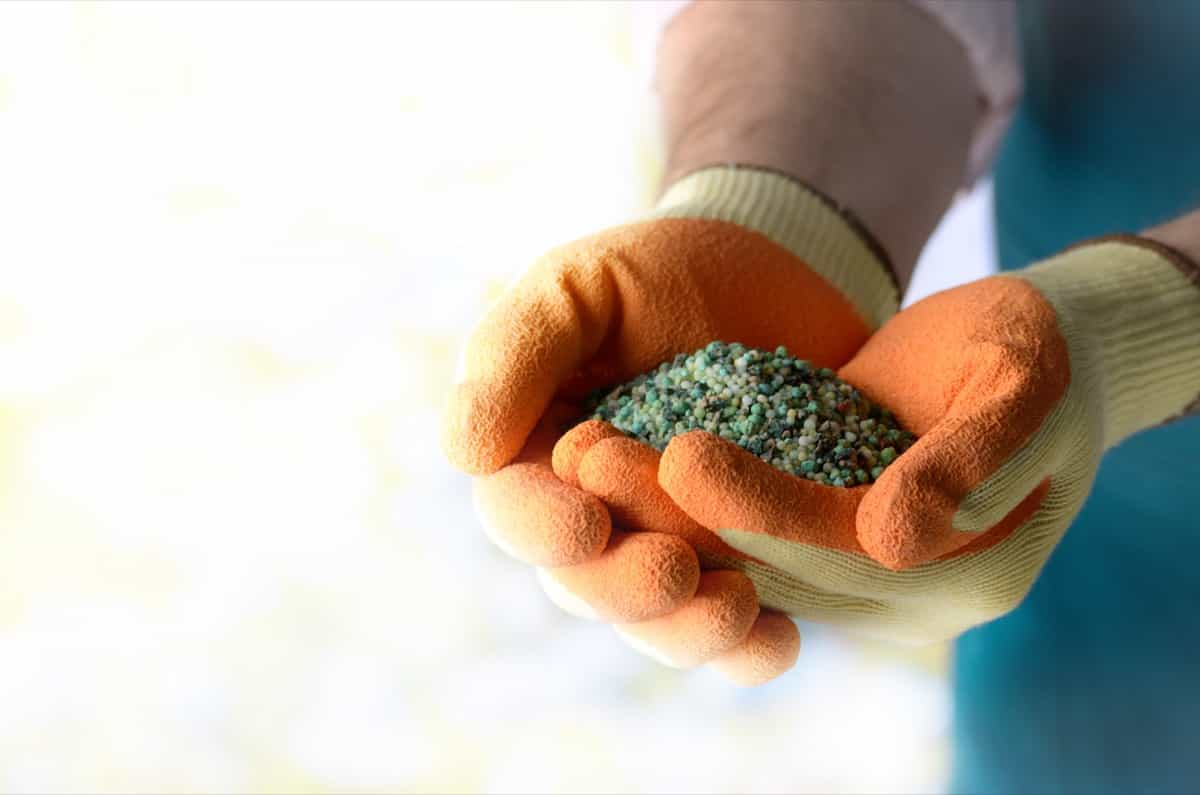
However, each citrus tree has unique nutrient requirements and preferences, so it’s essential to tailor the fertilizer program for each tree. This article discusses optimal fertilization practices for young and mature citrus trees, nutrient requirements for different varieties, micronutrient roles, seasonal variations, organic and synthetic fertilizer options, soil application techniques, irrigation and fertilizer interplay, and modern orchard technology tools.
Citrus Fertilizer Management
Understanding the Nutrient Needs of Citrus Trees: An Overview
Fertilizer management involves understanding the nutrient requirements of different citrus varieties, soil pH and fertility, application methods and timing, and environmental factors affecting nutrient uptake and utilization. Nutrients needed include nitrogen, phosphorus, potassium, calcium, magnesium, sulfur, iron, manganese, zinc, copper, boron, molybdenum, and chlorine.
The amount and ratio of these nutrients vary depending on the citrus type, age, growth stage, soil type, and climate. Citrus fertilizers can be applied in various forms and methods, such as granular, liquid, and foliar. The timing and frequency of fertilizer application depend on the nutrient demand of the citrus trees, with the highest demand during spring and summer and the lowest during winter.
Organic fertilizers, obtained from plant or animal sources, provide slow-release nutrients that improve soil fertility, structure, water retention, microbial activity, biodiversity, and fruit flavor, color, aroma, and shelf life. Citrus fertilizer management is a complex process that requires careful planning, monitoring, and adjustment. By following the best fertilizer practices for different citrus trees, growers can optimize their crop performance and profitability.
Optimal Fertilization Practices for Young Citrus Trees
Young citrus trees, typically less than five years old, require fertilization to promote vegetative growth and develop a strong root system for future fruit production. Nitrogen is the most important nutrient for young citrus trees, as it stimulates leaf growth and enhances photosynthetic capacity.
However, too much nitrogen can cause excessive vegetative growth, affecting flowering and fruiting. The recommended nitrogen rate depends on age and size, with 0.1 pounds of actual nitrogen per year of tree age or per inch of trunk diameter. This amount should be divided into several applications throughout the year.
In case you missed it: How to Grow a Finger Lime Tree: Planting, Propagation, Care for Citrus Australasica/Caviar Lime
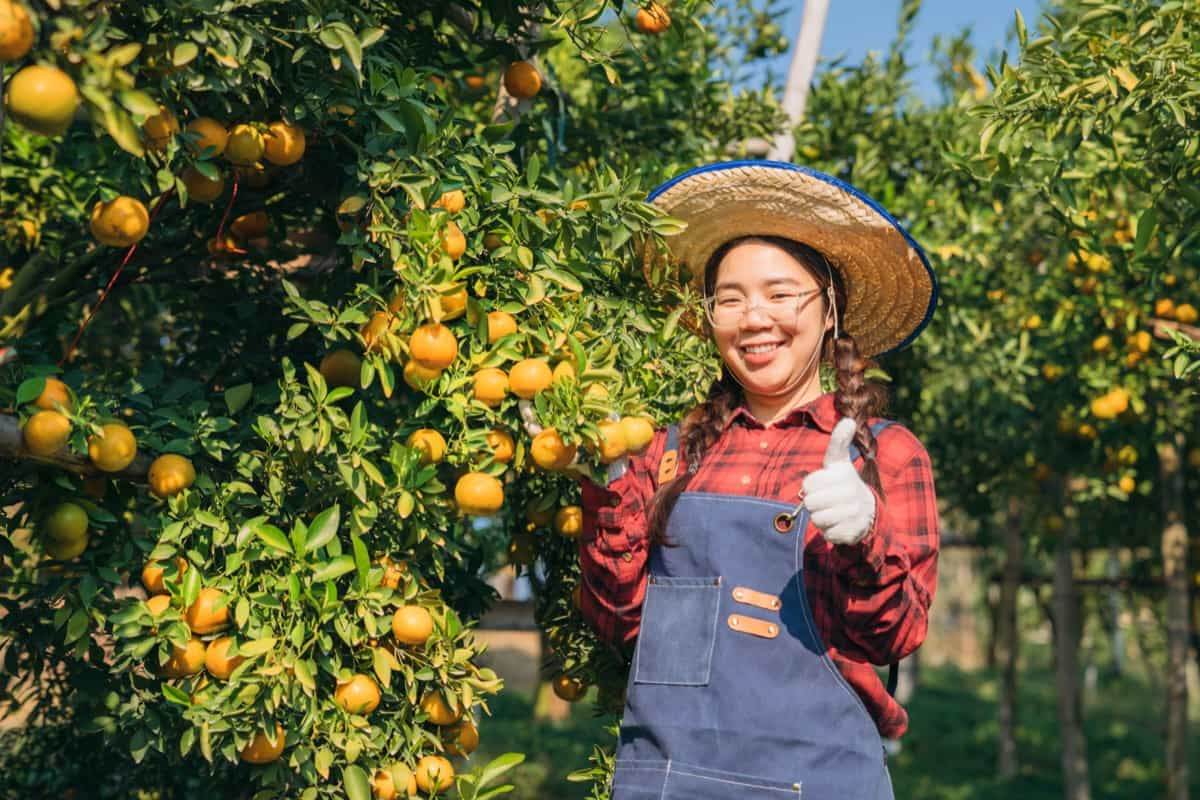
Phosphorus and potassium are also important macronutrients for young citrus trees, promoting root growth and development. The recommended rates depend on soil test results, with higher levels requiring no additional application. Calcium, magnesium, and sulfur are also needed in moderate amounts, with the best time to apply them in spring or early summer, along with nitrogen, phosphorus, and potassium as a complete fertilizer.
Micronutrients, such as iron, zinc, manganese, copper, and boron, are also essential for young citrus trees. Iron is involved in chlorophyll synthesis and electron transport, zinc regulates plant growth and development, manganese is involved in photosynthesis and respiration, copper is involved in lignin synthesis and disease resistance, and boron affects cell wall formation and carbohydrate metabolism. The recommended micronutrient rates depend on leaf tissue analysis results, with higher levels requiring more application.
Nitrogen Requirements in Citrus: Balancing Growth and Fruit Quality
Citrus trees require nitrogen for growth, flowering, and fruiting, but excessive nitrogen can negatively impact the quality of fruits. Balancing nitrogen requirements with desired fruit quality is crucial. Nitrogen requirements vary depending on factors such as age, size, variety, rootstock, soil type, climate, and yield. Young citrus trees need more nitrogen than mature ones, with recommended rates ranging from 0.1 to 0.4 kg per tree per year.
Mature citrus trees need less nitrogen per unit of canopy area but more nitrogen per unit of fruit yield. Recommended rates range from 0.5 to 1.5 kg per tree per year, depending on fruit yield and quality goals. High-yielding varieties like Valencia oranges may need more nitrogen than low-yielding ones like lemons or grapefruits.
Nitrogen fertilization timing and frequency also affect growth and fruit quality. It should be applied during active growth periods (spring to early summer) and avoided during dormant periods (late fall to early winter) and fruit development stages (late summer to early fall). Nitrogen fertilization can be applied in various forms, including organic or synthetic fertilizers, soil or foliar applications, or slow-release or fast-release products.
The choice of nitrogen fertilization depends on availability, cost, efficiency, and environmental impact. Organic fertilizers are generally cheaper and more environmentally friendly, while soil applications are more convenient and economical. Slow-release fertilizers are more expensive and less readily available but may have higher efficiency and lower leaching losses.
Phosphorus and Potassium in Citrus Fertilization: Why They Matter
Phosphorus and potassium are also important macronutrients for mature citrus trees, but they are needed in lower amounts than nitrogen. Phosphorus and potassium enhance fruit quality by improving color, flavor, juice content, acidity, sugar content, and shelf life. The recommended phosphorus and potassium rates for mature citrus trees depend on their soil test results and fruit quality goals.
In case you missed it: Citrus Farming in India: Citrus Fruit Cultivation Cost, Profit, and Production by State
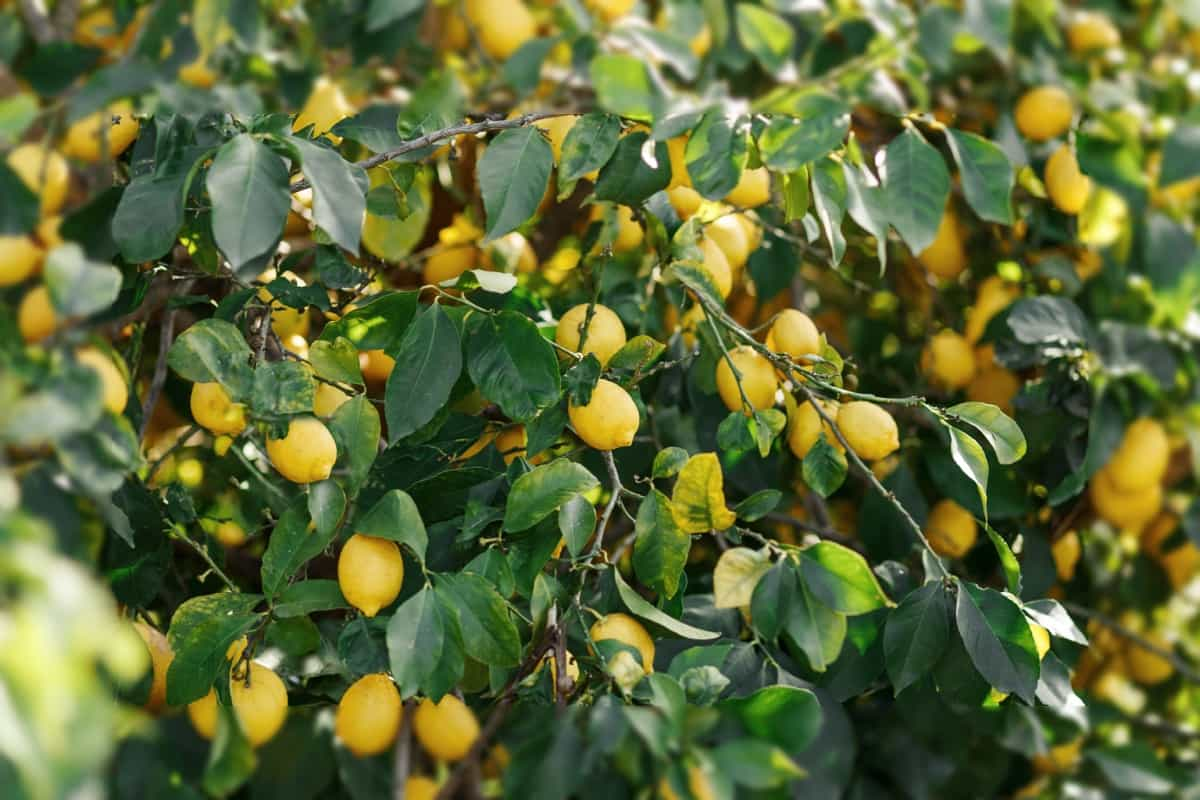
If the soil has adequate has these nutrients (P > 30 ppm; K > 100 ppm), no additional application is needed. If the soil has low levels of these nutrients (P < 15 ppm; K < 50 ppm), apply 0.05 pounds of actual phosphorus or potassium per box of fruit produced or expected to be produced per tree per year.
The Role of Micronutrients in Citrus Tree Health and Productivity
Micronutrients are elements required by plants in small amounts, such as manganese, zinc, iron, copper, boron, molybdenum, chlorine, and nickel. They play a crucial role in various physiological and biochemical processes in plants. Citrus trees are susceptible to micronutrient deficiencies or toxicities due to their high demand and low mobility within plant tissues.
Symptoms of micronutrient deficiencies or toxicities include leaf chlorosis, leaf necrosis, leaf deformation, leaf drop, twig dieback, reduced flowering, fruit set, fruit size, quality, and yield. The micronutrient requirements of citrus trees depend on various factors such as soil type, pH, organic matter, moisture, temperature, rootstock type, and scion variety.
Seasonal Variations in Citrus Nutrient Requirements
Citrus trees are evergreen plants that produce fruit throughout the year. However, their nutrient requirements vary depending on the season and the stage of fruit development. Generally, citrus trees need more nitrogen in spring and summer when they are actively growing new leaves and flowers.
Nitrogen helps them produce chlorophyll, which is essential for photosynthesis and fruit quality. In fall and winter, citrus trees need more phosphorus and potassium, which are important for fruit maturation and ripening. Phosphorus and potassium also help the trees resist cold stress and diseases.
Organic Fertilization Options for Citrus Trees
Organic fertilizers are optained from natural sources, such as animal manures, composts, green manures, seaweed extracts, and rock minerals. They provide not only nutrients but also organic matter, beneficial microorganisms, and trace elements to the soil. Organic fertilizers can improve soil structure, water retention, aeration, and biological activity. They can also reduce soil erosion, leaching, and pollution. Some examples of organic fertilizers for citrus trees are blood meal, bone meal, cottonseed meal, fish emulsion, alfalfa meal, kelp meal, and rock phosphate.
Synthetic vs. Organic Fertilizers for Citrus Trees
Synthetic fertilizers are manufactured from chemical compounds, such as ammonium nitrate, urea, superphosphate, and potassium chloride. They provide readily available nutrients to the plants in a concentrated form. They can tailored to meet specific nutrient ratios and formulations for different crops and soils.
In case you missed it: A Step-By-Step Guide to High Density Fruit Farming: For Guava, Banana, Mango, Pineapple, Lemon, Papaya, Litchi, and Apple
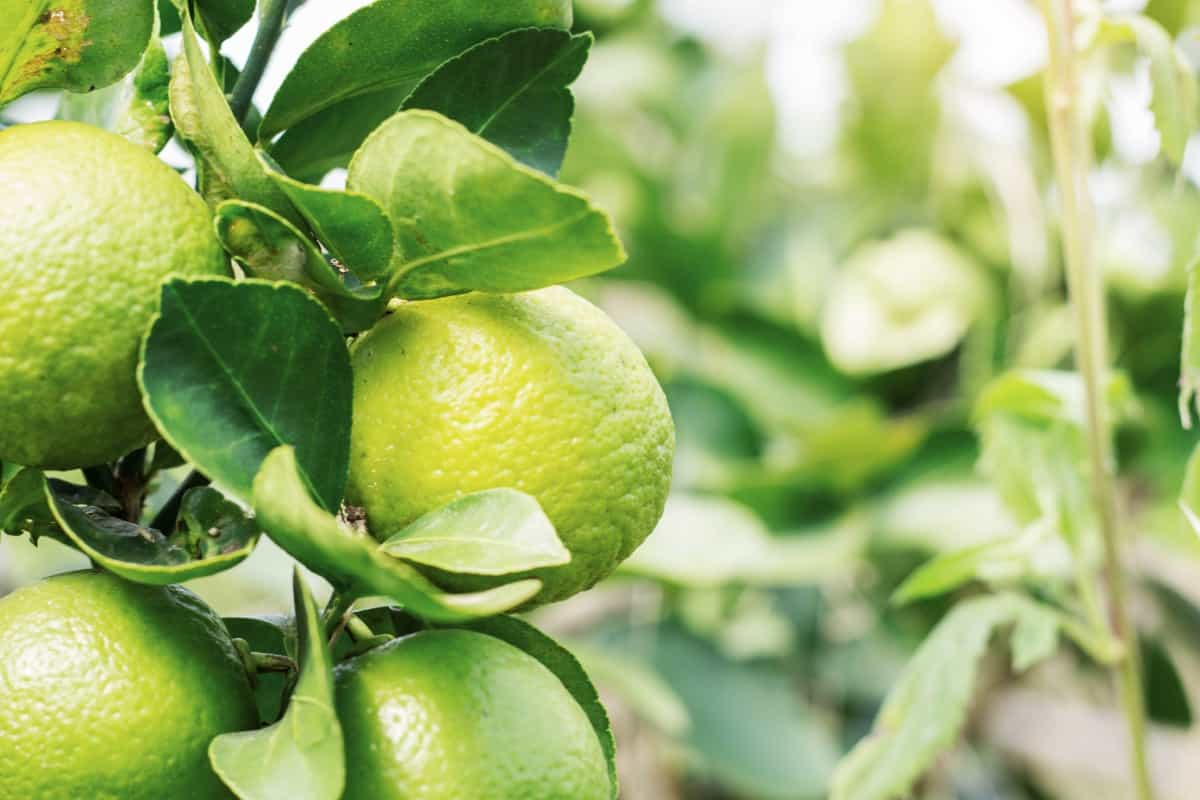
However, synthetic fertilizers have some drawbacks, such as increasing soil acidity, salinity, and toxicity. They can also cause nutrient imbalances, leaching, runoff, and environmental problems. Synthetic fertilizers are usually more expensive than organic fertilizers and require more frequent applications.
Fertilization Techniques: Soil Application vs. Foliar Feeding in Citrus Trees
Soil application is the most common method of fertilizing citrus trees. It involves spreading or injecting the fertilizer into the soil around the base of the tree or along the drip line. Soil application can be done manually or mechanically, using granular or liquid fertilizers. Soil application is effective for supplying macronutrients (N, P, K) and micronutrients (Ca, Mg, S) to the roots of the trees. However, soil application depends on the soil pH, moisture, temperature, texture, and microbial activity for nutrient availability and uptake.
Soil application can also be affected by leaching, volatilization, fixation, and immobilization of nutrients in the soil. Foliar feeding is an alternative or supplementary method of fertilizing citrus trees. It involves spraying or misting the fertilizer solution onto the leaves of the trees. Foliar feeding can be done using a backpack sprayer or a boom sprayer attached to a tractor or a truck. Foliar feeding is effective for supplying micronutrients (Fe, Mn, Zn, Cu) and some macronutrients (N) to the foliage of the trees.
Irrigation and Fertilizer Interplay in Citrus Tree Health
Irrigation and fertilizer are crucial for citrus trees’ growth, flowering, fruiting, and quality. Irrigation provides water to the roots for nutrient uptake, photosynthesis, transpiration, and cooling, while fertilizer provides nutrients to the leaves for metabolic processes like protein synthesis and hormone regulation. The amount and frequency of irrigation and fertilizer depend on factors like soil type, climate, tree age, rootstock, variety, and fruit load.
Citrus trees need more water and fertilizer during active growth, spring and summer, and less during dormant, winter. The goal is to provide adequate water and nutrients without stress or leaching, which can occur from over- or under-watering or over-fertilizing. Regular monitoring of soil moisture and nutrient status is essential to avoid stress and leaching. Irrigation and fertilizer can be adjusted accordingly based on these results.
Tailoring Fertilizer Programs for Different Citrus Varieties
Citrus trees, part of the Rutaceae family, are diverse in size, shape, color, flavor, acidity, sweetness, peel thickness, seediness, and juice content. Common citrus varieties include oranges, mandarins, grapefruits, lemons, limes, pomelos, kumquats, tangelos, tangerines, clementines, satsumas, and calamondins. Each variety has unique nutritional requirements and responses to fertilizer, making it crucial to tailor fertilizer programs. Factors affecting fertilizer needs include fruit yield, fruit quality, fruit maturity, fruit size, and rootstock.
Higher-yielding varieties require more fertilizer, while fruit quality is more sensitive to nutrient deficiencies or excesses. Fruit maturity is also influenced by the fruit’s size and rootstock’s efficiency in nutrient uptake. To tailor fertilizer programs, it is recommended to consult reliable sources like extension agents, research publications, or experienced growers and conduct periodic soil and leaf tests to determine the tree’s nutrient status and adjust fertilizer rates accordingly.
Detecting and Correcting Nutrient Deficiencies in Citrus Trees
Citrus trees require a balanced supply of macronutrients (nitrogen, phosphorus, potassium, calcium, magnesium, and sulfur) and micronutrients (iron, manganese, zinc, copper, boron, molybdenum, chlorine, and nickel) for optimal growth and fruit production. However, some citrus trees may suffer from nutrient deficiencies due to factors such as poor soil quality, inadequate fertilization, high rainfall, root damage, pests, diseases, or environmental stress.
In case you missed it: Top 15 Steps to Boost Lemon Yield: How to Increase Fruit Size, Production, and Quality
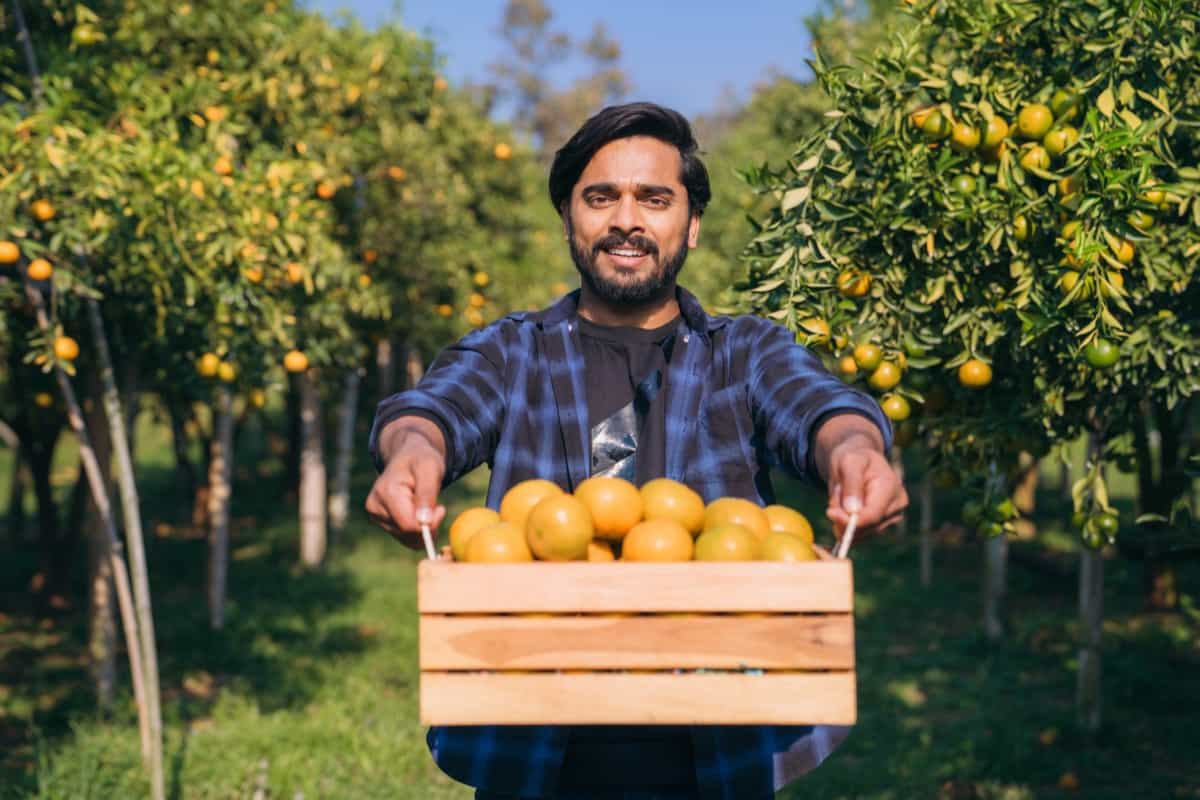
Common symptoms of nutrient deficiencies include nitrogen deficiency, dark green leaves with purple or brown spots, reduced growth, small fruits, low juice content, and poor fruit quality. Potassium deficiency results in yellow or brown margins or tips, reduced growth, small fruits, low juice content, and increased susceptibility to pests, diseases.
Calcium deficiency leads to deformed or cracked fruits, bitter pit, blossom-end rot, corky spots, reduced growth, leaf curling or cupping, leaf drop, and leaf curling or cupping. Magnesium deficiency results in yellow or brown interveinal chlorosis of older leaves, reduced growth, small fruits, low juice content, and poor fruit quality.
Sulfur deficiency results in pale green or yellow leaves, reduced growth, small fruits, low juice content, and poor fruit quality. Iron deficiency occurs in yellow or white interveinal chlorosis of young leaves. In contrast, manganese deficiency is seen in yellow or white interveinal chlorosis of young leaves with green veins and spots.
Zinc deficiency is seen in yellow or white interveinal chlorosis of young leaves, and copper deficiency is seen in yellow or white interveinal chlorosis of young leaves. Boron deficiency results in deformed or cracked fruits, internal browning or corking, reduced growth, leaf curling or cupping, leaf drop, and leaf scorching or necrosis.
Sustainable Fertilizer Practices for Eco-Friendly Citrus Farming
Citrus farming is a significant agricultural activity that offers economic and social benefits globally. However, it also poses environmental challenges like soil erosion, nutrient leaching, water pollution, greenhouse gas emissions, and biodiversity loss. To mitigate these issues, sustainable fertilizer practices are essential.
These include using organic fertilizers from natural sources like compost, manure, crop residues, green manures, biochar, or vermicompost, which improve soil structure, water retention, microbial activity, and nutrient availability. Slow-release fertilizers release nutrients gradually over time, reducing nutrient leaching, runoff, volatilization, and denitrification. Fertigation, a technique that combines irrigation and fertilization, increases the efficiency and uniformity of water and nutrient use.
Precision agriculture, a technology-based approach, uses sensors, GPS, drones, robots, or artificial intelligence to monitor and manage crop conditions and inputs. This approach optimizes fertilizer type, rate, timing, and placement according to soil and plant variability, reducing resource waste and improving crop quality and yield.
Technology in Citrus Fertilization: Tools and Techniques for Modern Orchards
Fertigation- application of fertilizers through irrigation systems, allowing precise, efficient delivery of nutrients to the root zone. Controlled release fertilizers release nutrients slowly over time, reducing the frequent applications and minimizing nutrient losses. Foliar application sprays nutrients on leaves, often combined with pesticides or chemicals, to correct nutrient deficiencies, especially of micronutrients not easily absorbed by roots.
This method is most effective on young flushes with high nutrient demand. Genetic transformation introduces foreign genes into plant cells using biotechnology methods, creating citrus varieties with improved traits like pest resistance, disease tolerance, and enhanced fruit quality. Genetic transformation can also modify nutrient metabolism or uptake.
In case you missed it: Citrus Farming in the Philippines: Exploring Philipino Citrus Varieties to Growing Citrus Fruits
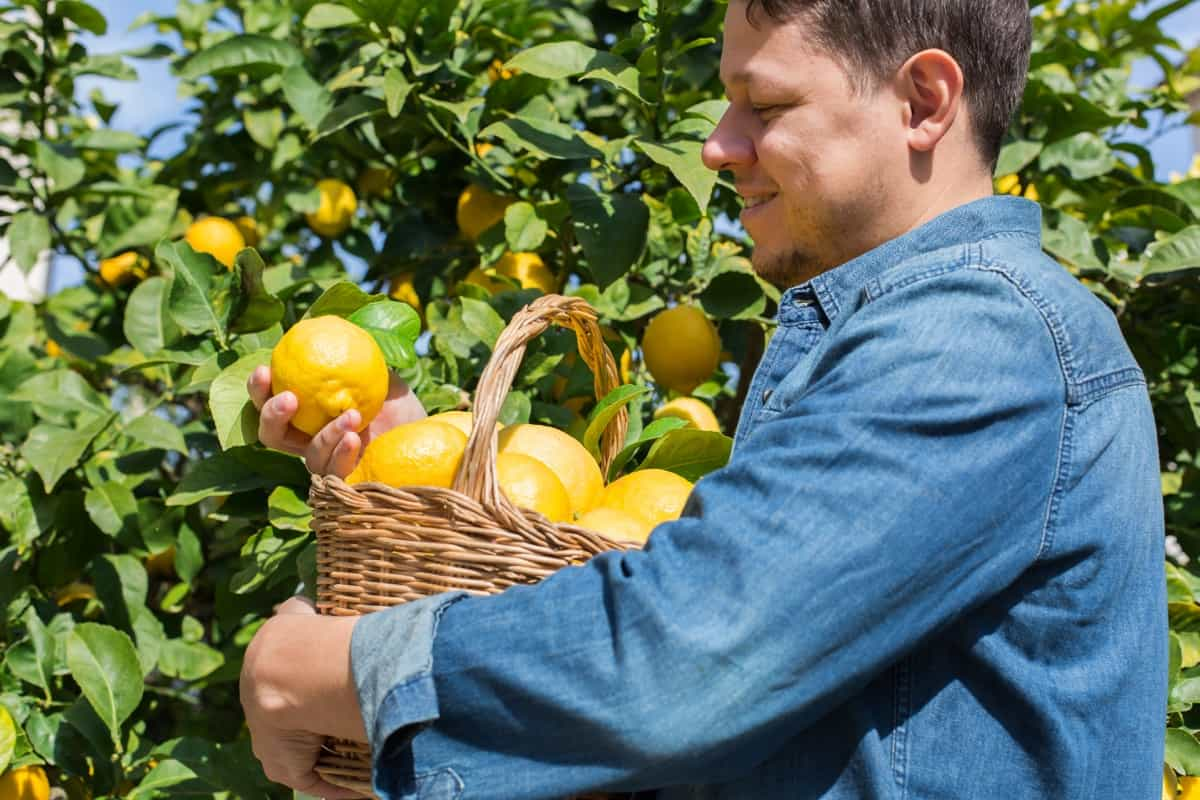
Citrus Tree Fertilization Schedule
| Season | Fertilizer Application | Dosage | Age |
| Spring | Every 1-2 months | 1-2 lbs of 15-5-10 NPK per inch of trunk diameter | All ages |
| Summer | Every 1-2 months | 1-2 lbs of 15-5-10 NPK per inch of trunk diameter | All ages |
| Fall | Every 2-3 months | 0.5-1 lb of 15-5-10 NPK per inch of trunk diameter | Mature trees only |
| Winter | Every 2-3 months | 0.5-1 lb of 15-5-10 NPK per inch of trunk diameter | Mature trees only |
Conclusion
Optimal citrus fertilizer management involves understanding nutrient needs and applying the right dosage based on tree age and seasonal requirements. A balanced approach, considering factors like climate and tree type, ensures healthy growth and abundant fruit production.
- Types of Pesticides Used in Agriculture: A Beginner’s Guide
- Economical Aquaculture: A Guide to Low-Budget Fish Farming
- 15 Common Planting Errors That Can Doom Your Fruit Trees
- How to Make Houseplants Bushy: Effective Tips and Ideas
- Innovative Strategies for Boosting Coconut Pollination and Yield
- Pollination Strategies for Maximum Pumpkin Yield
- The Complete Guide to Chicken Fattening: Strategies for Maximum Growth
- Natural Solutions for Tulip Problems: 100% Effective Remedies for Leaf and Bulb-Related Issues
- Revolutionizing Citrus Preservation: Towards a Healthier, Greener Future
- Natural Solutions for Peony Leaf and Flower Problems: 100% Effective Remedies
- Maximizing Profits with Avocado Contract Farming in India: A Comprehensive Guide
- Natural Solutions for Hydrangea Problems: 100% Effective Remedies for Leaf and Flowers
- The Ultimate Guide to Choosing the Perfect Foliage Friend: Bringing Life Indoors
- From Sunlight to Sustainability: 15 Ways to Use Solar Technology in Agriculture
- The Ultimate Guide to Dong Tao Chicken: Exploring from History to Raising
- The Eco-Friendly Makeover: How to Convert Your Unused Swimming Pool into a Fish Pond
- Mastering the Art of Delaware Chicken Farming: Essentials for Healthy Backyard Flocks
- 20 Best Homemade Fertilizers for Money Plant: DIY Recipes and Application Methods
- How to Craft a Comprehensive Free-Range Chicken Farming Business Plan
- Brighten Your Flock: Raising Easter Egger Chickens for Beauty and Bounty
- How to Optimize Your Poultry Egg Farm Business Plan with These Strategies
- Subsidy for Spirulina Cultivation: How Indian Government Schemes Encouraging Spirulina Farmers
- Ultimate Guide to Raising Dominique Chickens: Breeding, Feeding, Egg-Production, and Care
- Mastering the Art of Raising Jersey Giant Chickens: Care, Feeding, and More
- Ultimate Guide to Raising Legbar Chickens: Breeding, Farming Practices, Diet, Egg-Production
- How to Raise Welsummer Chickens: A Comprehensive Guide for Beginners
- How to Protect Indoor Plants in Winter: A Comprehensive Guide
- Ultimate Guide to Grow Bag Gardening: Tips, Tricks, and Planting Ideas for Urban Gardeners
- Guide to Lotus Cultivation: How to Propagate, Plant, Grow, Care, Cost, and Profit
- Agriculture Drone Subsidy Scheme: Government Kisan Subsidy, License, and How to Apply Online
- Ultimate Guide to Raising Araucana Chickens: Breed Profile, Farming Economics, Diet, and Care
- Bringing Hydroponics to Classroom: Importance, Benefits of Learning for School Students
- Ultimate Guide to Raising Polish Chickens: Breed Profile, Farming Economics, Diet, and Care
- Ultimate Guide to Raising Australorp Chickens: Profile, Farming Economics, Egg Production, Diet, and Care
- Silkie Chicken Farming: Raising Practices, Varieties, Egg Production, Diet, and Care
- Sussex Chicken Farming: Raising Practices, Varieties, Egg Production, Diet and Care